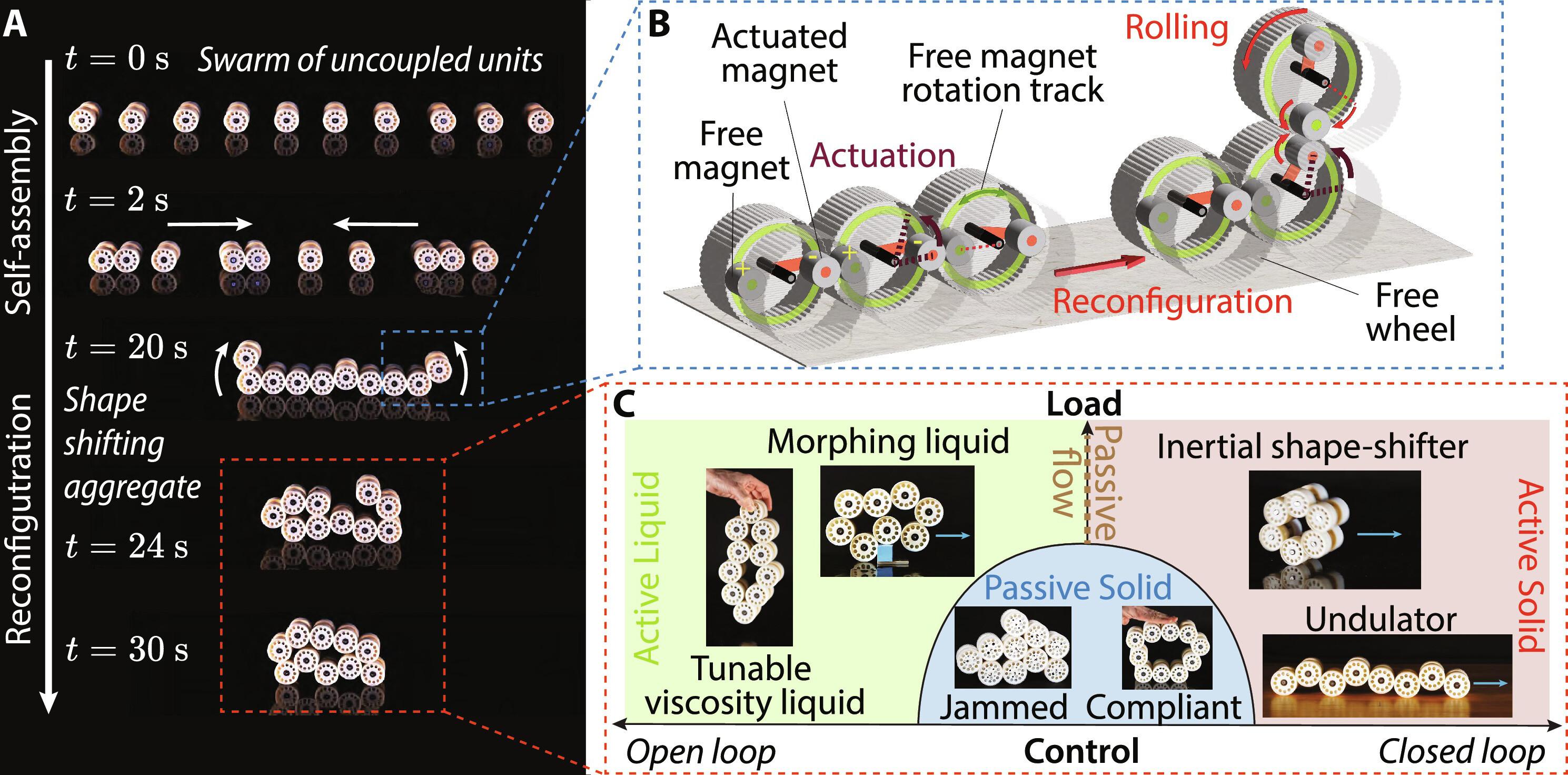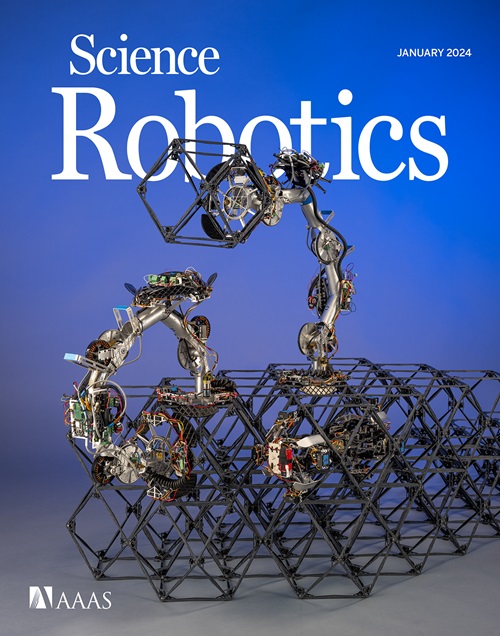A self-organizing robotic aggregate using solid and liquid-like collective states
IF 26.1
1区 计算机科学
Q1 ROBOTICS
引用次数: 0
Abstract
Designing robotic systems that can change their physical form factor as well as their compliance to adapt to environmental constraints remains a major conceptual and technical challenge. To address this, we introduce the Granulobot, a modular system that blurs the distinction between soft, modular, and swarm robotics. The system consists of gear-like units that each contain a single actuator such that units can self-assemble into larger, granular aggregates using magnetic coupling. These aggregates can reconfigure dynamically and also split into subsystems that might later recombine. Aggregates can self-organize into collective states with solid- and liquid-like properties, thus displaying widely differing compliance. These states can be perturbed locally via actuators or externally via mechanical feedback from the environment to produce adaptive shape-shifting in a decentralized manner. This, in turn, can generate locomotion strategies adapted to different conditions. Aggregates can move over obstacles without using external sensors or coordinates to maintain a steady gait over different surfaces without electronic communication among units. The modular design highlights a physical, morphological form of control that advances the development of resilient robotic systems with the ability to morph and adapt to different functions and conditions.

利用固态和液态类似集体状态的自组织机器人集合体。
设计能够改变物理外形尺寸和顺应性以适应环境限制的机器人系统,仍然是一项重大的概念和技术挑战。为了解决这个问题,我们推出了 Granulobot 模块化系统,它模糊了软机器人、模块化机器人和蜂群机器人之间的区别。该系统由齿轮状单元组成,每个单元包含一个执行器,这样单元就能利用磁耦合自我组装成更大的颗粒状集合体。这些聚合体可以动态地重新配置,也可以分裂成子系统,然后再重新组合。聚合体可以自组织成具有固态和液态性质的集体状态,从而表现出截然不同的顺应性。这些状态可以通过致动器进行局部扰动,或通过环境的机械反馈进行外部扰动,从而以分散的方式产生自适应的形状变化。这反过来又能产生适应不同条件的运动策略。聚合体可以在不使用外部传感器或坐标的情况下越过障碍物,在不同的表面上保持稳定的步态,而不需要各单元之间进行电子通信。模块化设计突出了一种物理的、形态的控制形式,推动了具有变形能力的弹性机器人系统的发展,使其能够适应不同的功能和条件。
本文章由计算机程序翻译,如有差异,请以英文原文为准。
求助全文
约1分钟内获得全文
求助全文
来源期刊

Science Robotics
Mathematics-Control and Optimization
CiteScore
30.60
自引率
2.80%
发文量
83
期刊介绍:
Science Robotics publishes original, peer-reviewed, science- or engineering-based research articles that advance the field of robotics. The journal also features editor-commissioned Reviews. An international team of academic editors holds Science Robotics articles to the same high-quality standard that is the hallmark of the Science family of journals.
Sub-topics include: actuators, advanced materials, artificial Intelligence, autonomous vehicles, bio-inspired design, exoskeletons, fabrication, field robotics, human-robot interaction, humanoids, industrial robotics, kinematics, machine learning, material science, medical technology, motion planning and control, micro- and nano-robotics, multi-robot control, sensors, service robotics, social and ethical issues, soft robotics, and space, planetary and undersea exploration.
 求助内容:
求助内容: 应助结果提醒方式:
应助结果提醒方式:


